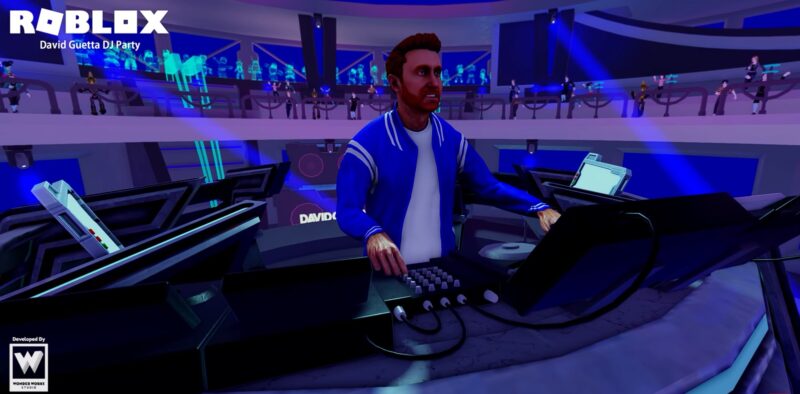Takeaway
The Metaverse is rapidly evolving into a complex digital ecosystem where users can interact, create, and engage in immersive experiences. As the demand for engaging and multidimensional experiences grows, the role of the Metaverse game designer has become increasingly critical. This article delves into the key skills required for a Metaverse game designer, emphasizing the technical, creative, and collaborative competencies necessary to deliver compelling virtual environments.
In the context of the Metaverse, game designers must not only possess traditional game design skills but also adapt to the unique challenges and opportunities presented by this expansive digital landscape. This article will explore essential skills such as 3D modeling, user experience (UX) design, programming, and an understanding of blockchain technology, among others. Real-world examples and data will be provided to illustrate the importance of these skills in creating successful Metaverse experiences.
Understanding the Metaverse: A New Frontier in Game Design
The Metaverse is often described as a collective virtual space that merges physical and digital realities. According to a report by Bloomberg Intelligence, the Metaverse market is projected to reach $800 billion by 2024, driven by advancements in augmented reality (AR), virtual reality (VR), and blockchain technologies (Bloomberg, 2021). This growth presents a unique opportunity for game designers to create innovative experiences that transcend traditional gaming paradigms.
Key Skills for Metaverse Game Designers
1. 3D Modeling and Animation
One of the foundational skills for a Metaverse game designer is proficiency in 3D modeling and animation. Designers must create realistic and engaging environments, characters, and objects that enhance user immersion. Tools such as Blender, Autodesk Maya, and Unity are commonly used in the industry. For instance, the popular game “Roblox” allows users to create their own 3D worlds, showcasing the importance of user-generated content in the Metaverse.
 Roblox allows the creation of 3D worlds and characters like David Guetta.
Roblox allows the creation of 3D worlds and characters like David Guetta.
2. User Experience (UX) Design
In the Metaverse, user experience is paramount. Designers must understand how users interact with virtual environments and ensure that these interactions are intuitive and enjoyable. Research by Nielsen Norman Group indicates that a well-designed user experience can increase user satisfaction by up to 80% (Nielsen, 2020). This involves conducting user research, creating wireframes, and prototyping to test and refine designs before implementation.
3. Programming and Scripting
Programming skills are essential for implementing game mechanics and interactivity within the Metaverse. Familiarity with languages such as C#, C++, and JavaScript is crucial for developing complex systems. For example, the game “Decentraland” utilizes Ethereum blockchain technology to create a decentralized virtual world, requiring designers to have a solid understanding of smart contracts and decentralized applications (dApps).
4. Understanding Blockchain Technology
As the Metaverse increasingly incorporates blockchain technology, game designers must understand its implications for ownership, transactions, and digital assets. Non-fungible tokens (NFTs) have become a significant aspect of the Metaverse, allowing users to buy, sell, and trade unique digital items. According to NonFungible.com, the NFT market generated over $10 billion in sales in Q3 2021 alone (NonFungible, 2021). Designers must be adept at integrating NFTs into their games to enhance user engagement and create new revenue streams.
5. Collaboration and Communication Skills
The development of Metaverse experiences often involves multidisciplinary teams, including artists, programmers, and marketers. Effective collaboration and communication skills are essential for ensuring that all team members are aligned and working towards a common goal. Agile methodologies, such as Scrum, are commonly employed in game development to facilitate collaboration and iterative design processes.
6. Knowledge of Game Mechanics and Design Principles
A deep understanding of game mechanics and design principles is crucial for creating engaging experiences in the Metaverse. Designers must be familiar with concepts such as reward systems, player motivation, and level design. The “Fortnite” franchise exemplifies effective game mechanics, combining battle royale gameplay with social interaction and user-generated content, resulting in a highly engaging experience for players.
7. Adaptability and Continuous Learning
The Metaverse is a rapidly changing landscape, and designers must be adaptable and willing to learn new technologies and trends. Staying updated on industry developments, attending conferences, and participating in online courses can help designers remain competitive. For instance, platforms like Coursera and Udemy offer courses on VR development, blockchain integration, and game design, enabling designers to enhance their skill sets continuously.
Real-World Examples of Successful Metaverse Experiences
Several successful projects in the Metaverse highlight the importance of the skills discussed above. “Fortnite,” developed by Epic Games, has evolved from a simple battle royale game into a social platform where users can attend virtual concerts, participate in events, and create their own content. This transformation showcases the potential of the Metaverse to serve as a multifaceted platform for entertainment and social interaction.
Another notable example is “The Sandbox,” a virtual world where users can create, own, and monetize their gaming experiences using blockchain technology. The Sandbox has attracted significant investment, including partnerships with major brands like Atari and Snoop Dogg, demonstrating the commercial viability of Metaverse projects (The Sandbox, 2021).
 Snoop Dogg’s partnership with The Sandbox demonstrates Metaverse success.
Snoop Dogg’s partnership with The Sandbox demonstrates Metaverse success.
Key Points
- The Metaverse is projected to reach $800 billion by 2024, creating opportunities for game designers.
- Essential skills for Metaverse game designers include 3D modeling, UX design, programming, and blockchain knowledge.
- Effective collaboration and communication are crucial for multidisciplinary teams in game development.
- Successful projects like “Fortnite” and “The Sandbox” illustrate the potential of the Metaverse for innovative experiences.
In conclusion, the role of a Metaverse game designer is multifaceted and requires a diverse skill set to create engaging and immersive experiences. As the Metaverse continues to evolve, designers must stay abreast of technological advancements and adapt their skills accordingly. By mastering 3D modeling, UX design, programming, and blockchain technology, game designers can contribute to the development of innovative virtual worlds that captivate users and redefine the gaming landscape.

